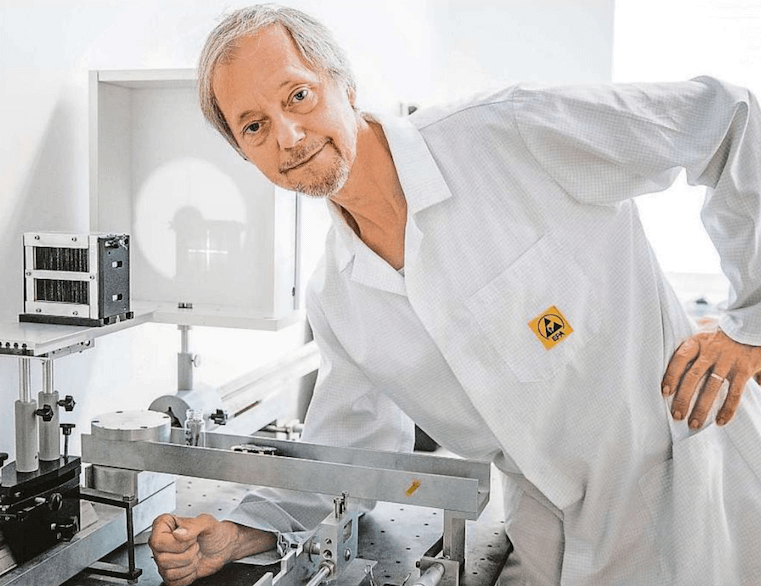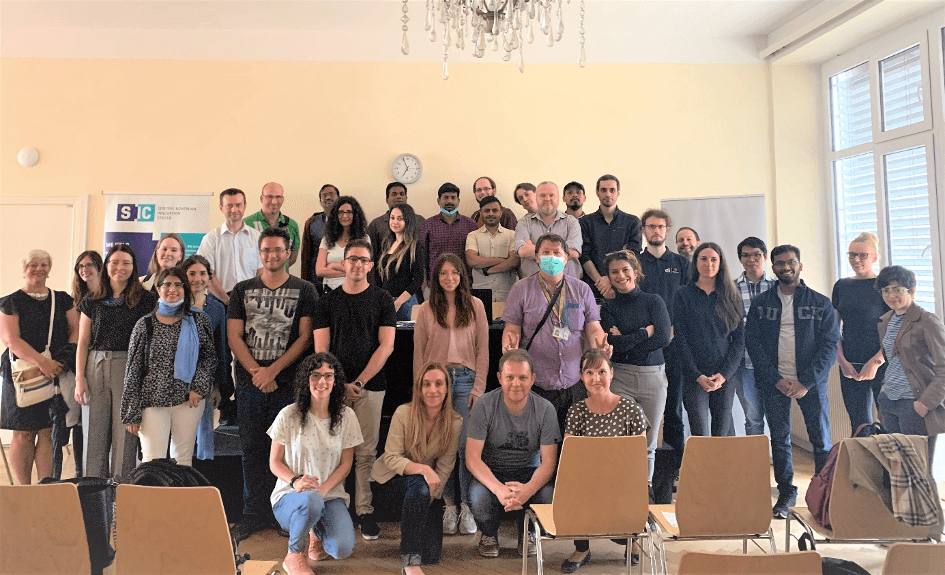
A nanosatellite carries a unique X-ray camera from Břežany
A Czech nanosatellite watches for a supernova explosion using an X-ray camera capable of looking inside a gnat.
DOLNÍ BŘEŽANY Czech scientists can now boast of their own space project. Their nanosatellite with an X-ray telescope is the most successful of a series of 50 nanosatellite projects from all over the world – it is the only one to remain operable three years after its launch.
12 years ago, researchers started working with Rigaku Innovative Technologies Europe, a newly established company with Japanese capital, which moved from Prague to Dolní Břežany in Central Bohemia last year. Besides space instruments, the company develops and produces special X-ray devices.
The satellite weighs 1.5 kilograms including a computer, batteries, solar cells, and expandable panels; its development cost 35 million Czech crowns. Adolf Inneman of Rigakuis one of the people who have been involved in the project from the very beginning. “Small satellites are highly vulnerable because of cosmic radiation,” Mr. Inneman explains one of the stumbling blocks.

Adolf Inneman. Source: MAFRA
Can you please elaborate on your business activities?
We produce X-ray cameras. And we have a unique product on the global scale – we offer an X-ray camera with the highest resolution on the market. We can see things smaller than one micron. For instance, we can watch how the digestive tract in a gnat works. The cameras find use primarily in biology, materials science, and applied physics. Our devices are not used in medicine as the human scale is too large.
One of your successes is undoubtedly a nanosatellite project…
The development started in 2010 when we agreed on the project with the Czech Aerospace Research Centre (VZLU).
Have you also sent an X-ray camera to space?
Yes, we have. However, the satellite that we call VZLUSAT-1 does not carry a high-resolution X-ray camera. Our aim is to capture a supernova explosion. A supernova explodes in our galaxy every day. However, we never know where. There is no telescope that would be able to scan the entire skies. Supernova flashes are extremely short. They last between one and twenty seconds and that’s it. Our goal is to capture such a flash in real time with our satellite.
Have you managed to capture such a flash with your nanosatellite?
No, we have not, partly because our optics are tiny. In fact, it is a diminutive version of what we would like to achieve in our next mission. The aim was to verify if all the components survive the launch and are able to process data and transmit them to the Earth. Most space agencies won’t even talk to you if you haven’t got a space-proven technology. And that’s what we were after – to have a tried and tested technology. That would enable us to venture other, larger projects. If we did not have a space-tested technology, we would have had to work for 10 to 20 years to achieve some certification and only then would they be willing to talk to us.
So, your idea to launch a nanosatellite was much more effective…
We went the Czech way. That means to develop, equip, launch, and operate the satellite without anyone’s help.
What is so interesting about your technology?
We have implemented our X-ray technology that we call lobster-eye optics. It resembles the eye of the fly. We are one of the only two companies in the world to have developed such technology.
What was your path to X-ray optics?
It was the very beginning of my professional career. When I was just fourteen, I started working with the Astronomical Institute of the Czech Academy of Sciences where they developed X-ray optics for the Interkosmos space program. Since then, I have focused almost exclusively on X-ray optics.
Where does the satellite send the data?
We work with professor Jiří Masopust from the West Bohemian University in Pilsen. They have a radio station that receives the signal twice a day as the satellite flies over. They have been “operating the satellite” as we say, for three years.
Are you satisfied with the project, then?
As regards our miniature technology, the undertaking is a little miracle. The dimensions of the satellite are 10 by 10 by 20 centimeters and devices of this kind typically work in space for a week, definitely not longer than one month.
Are you part of a larger project?
Around fifty satellites launched together with us within one month as part of an international mission codenamed QB50. It was the seventh framework project funded by the European Union. One week after launch, only seven satellites remained operable. Others “died” within half a year and the Slovaks had only a radio beacon working. That is why the satellite kept a single function – to broadcast in Morse alphabet that it exists and its name. It remained in this mode for a year and a half or so.
That’s a big difference from your satellite…
We have operated a fully functional satellite with all scientific experiments for three years. Originally, there was a plan to build a kind of train to take those fifty satellites to orbit all at once.
Besides waiting for a supernova, what other research do you carry out?
We measure radiation, for instance. When we first approached Charles University, they showed us that only very large devices are capable of something like that. We eventually developed a device that weighs just a few grams. We also study composite materials because I am a chemical engineer. We are testing a composite radiation shield in space and measure wetness that a satellite takes with it from the Earth. A German device was supposed to take measurements in the upper layers of the atmosphere but failed to even start working.
Why has the success rate been so low? What threatens these projects?
Small satellites in particular are highly vulnerable to cosmic radiation. A large satellite can carry a radiation shield made from lead or tungsten, for instance. However, this is not possible on the small scale, so we have only a light composite shield.
How much does the satellite weigh?
The satellite weighs 1.5 kilograms including a computer, batteries, solar cells, and expandable panels, i.e. fully equipped. The whole thing cost 35 million Czech crowns and I think that no-one has ever managed to build a satellite like this cheaper. We received two grants from the Technology Agency of the Czech Republic. The first Czech nanosatellite is a nice example of a successful collaboration between SMEs and research institutions including the Czech Aerospace Research Centre, the Astronomical Institute of the Czech Academy of Sciences, and universities, namely the Czech Technical University in Prague and the West Bohemian University in Pilsen. Besides Rigaku, the business participants included TTS, HVM Plasma, Frentech Brno and 5M.
How high in orbit is the satellite at the moment?
We have been flying at a higher orbit than the International Space Station (ISS). We started at 520 kilometers and have since descended to 500 kilometers. It should take another 18 years or so before we burn in the atmosphere.
Where did you launch from?
After some peripeties, an Indian rocket eventually took us to the orbit in 2017. It was the sixth planned launched. First, we were supposed to fly on board of Ukrainian Dnepr rocket. However, the entire project fell through due to the civil war in the Ukraine. Then we arranged for Ariane rocket operated by the European Space Agency which would launch from the Guiana Space Centre in Latin America. This option failed, too. Next, there was an idea to use the supply module that flies from Baikonur to ISS. And the initial plan to create the “space train” for satellites did not work out either.
Source: MF DNES







